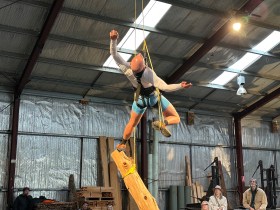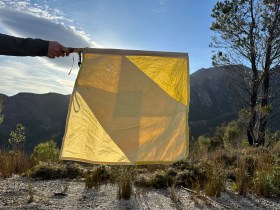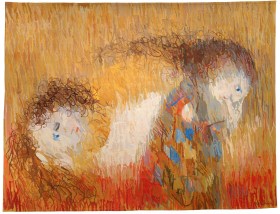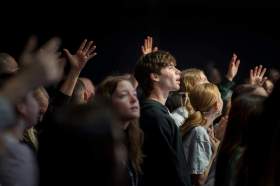Image CC Shutterstock
The Bureau of Communications and Art Research (BCAR) for the Commonwealth Government of Australia, in collaboration with Creative Partnerships Australia, has released a new analysis paper on private sector support for Australia’s arts and culture sector.
Private sector support for the arts in Australia (published 27 June 2017) found that, ‘overall private sector support [combining donations and sponsorship] for the arts in Australia is estimated to have grown over a period of six years, from $221.1 million in 2009–10 to between $268.5 million and $279.8 million in 2015–16.’
The Report explains: ‘Private sector support for the arts—whether from individuals or business entities—plays an important role in providing a supportive environment in which the arts can thrive. Such support is achieved through giving, investing, partnerships and volunteering … as well as bringing donors, businesses, artists and arts organisations together.’
Creative Partnerships Australia commissioned this paper as a first step in estimating the size of private sector support over time using currently available data sourced from the Australia Business Arts Foundation (AbaF, merged with the Australia Council’s Artsupport Australia program in 2013 to form Creative Partnerships Australia), the Australian Bureau of Statistics (ABS) and the Australian Major Performing Arts Group (AMPAG).
The projections outlined suggest that private sector support for the arts in Australia continues to grow and flourish. However, it also highlights the need for more robust and comprehensive data in this area.
Key Findings
Donations estimates:
Overall private sector donations to the arts in Australia are estimated to have grown over a period of six years, from $123.1 million in 2009–10 to between $149.9 million and $176.6 million in 2015–16.
Sponsorship estimates:
Overall private sector arts sponsorships in Australia are estimated to have grown over a period of six years, from $98.0 million in 2009-10 to between $107.8 million and $118.6 million in 2015–16.
International comparisons:
Australia is a unique environment with distinct cultural characteristics underpinning our approach to philanthropy. This makes cross-country comparison challenging, as other countries, in particular the United States, have differing cultures around philanthropy and giving.
There are also differences in the frameworks each country has in place to encourage and facilitate private sector support.
With this in mind, the BCAR estimates broadly indicate that Australian per-capita private sector support for the arts is above that for Canada, similar to England, but below that for the United States, noting that comparable estimates are not available for Canada and England in the same year.
The BCAR estimates that in 2013 per capita private sector support for the arts was:
- between AUD $11 and AUD $14 in Australia (based on the total estimates in this paper)
- AUD $5 in Canada (based on individual contributions)
- AUD $46 in the United States (noting that this figure relates to contributions to the humanities as well as arts and culture)
Based on 2014–15 figures, per capita private sector support for arts estimates in England and Australia are broadly similar, with AUD $16 in England and between AUD $11 and AUD $16 in Australia.
On the Report modeling
Three models were used to produce estimates for each given year. While the models used have a good fit and strong prediction levels, the variation in the representativeness of the data means no single estimate is comprehensive.
The models immediately start to diverge once they exit the range of the AbaF data. This is most notable for the AMPAG model, which is based on Australia’s 28 major performing arts companies. As such, the AMPAG estimates are likely to overstate the overall trend for the sector due to the significant variation in the size, and the nature of activity, of arts organisations in Australia. These range from very small volunteer-run organisations, to considerably larger organisations with significant financial turnover and dedicated fundraising staff.
All estimates are significantly higher than the ABS 2014–15 survey based estimate of $204 million.
The Gross Operating Surplus (GOS) estimates would incorporate the structural impact on business income arising from the Global Financial Crisis (GFC) in 2007–08.
While the two linear models (AbaF and AMPAG) had significant good fit and strong prediction levels, the GOS model is the best fit (R2 adjusted = 0.9704) and is therefore the most reliable estimate.
The AbaF projections are based on its lowest historical growth rate of 4 per cent, which for a period of two years (2014–15 and 2015–16) aligns relatively closely with that modelled from the GOS data, and suggests that private sector support has continued to grow in real terms over the past six years.
The material in this discussion paper is licensed under a Creative Commons Attribution, 3.0 Australia license. © Commonwealth of Australia 2017. To read the full report.





